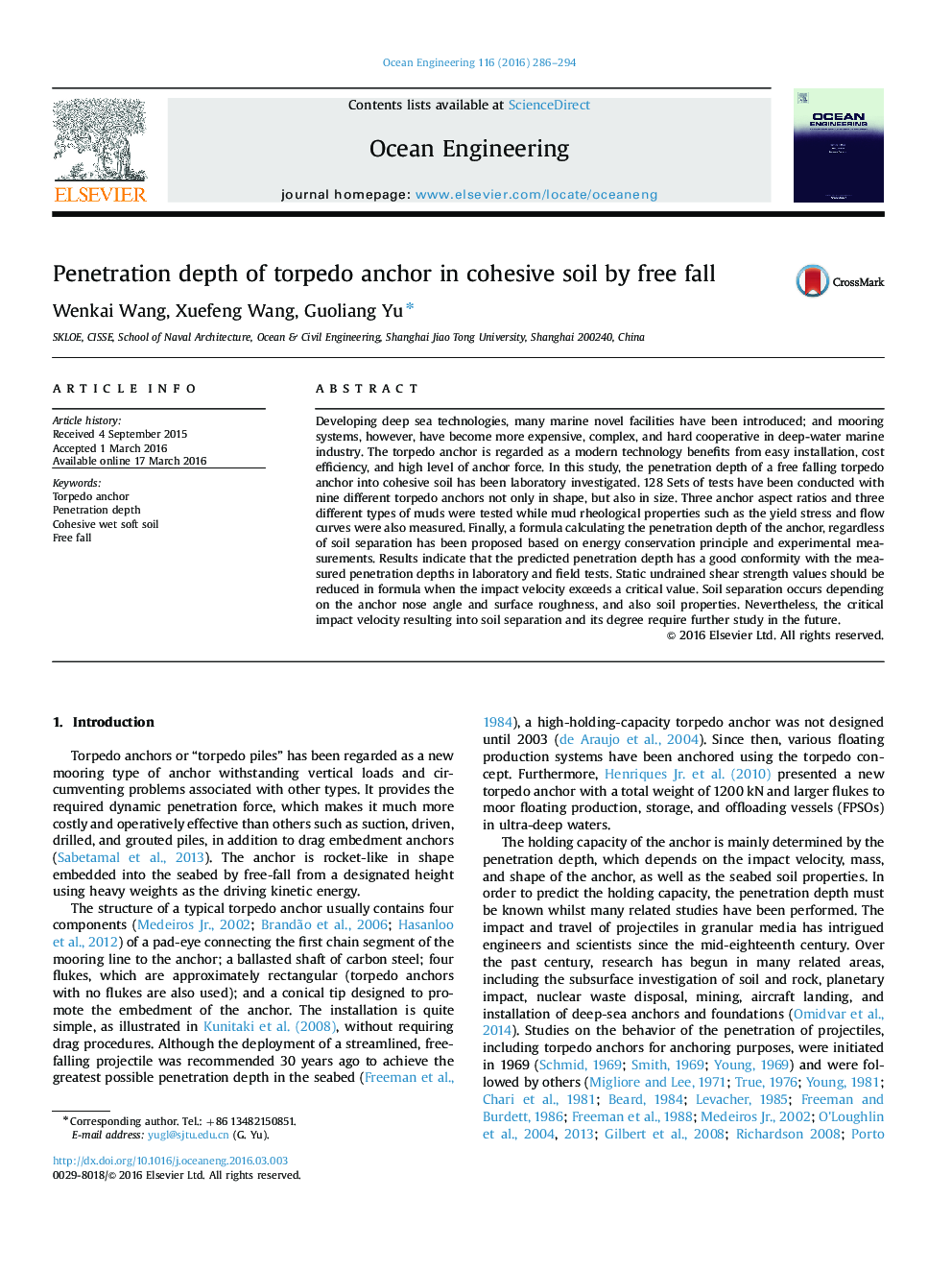| Article ID | Journal | Published Year | Pages | File Type |
|---|---|---|---|---|
| 1725153 | Ocean Engineering | 2016 | 9 Pages |
Abstract
Developing deep sea technologies, many marine novel facilities have been introduced; and mooring systems, however, have become more expensive, complex, and hard cooperative in deep-water marine industry. The torpedo anchor is regarded as a modern technology benefits from easy installation, cost efficiency, and high level of anchor force. In this study, the penetration depth of a free falling torpedo anchor into cohesive soil has been laboratory investigated. 128 Sets of tests have been conducted with nine different torpedo anchors not only in shape, but also in size. Three anchor aspect ratios and three different types of muds were tested while mud rheological properties such as the yield stress and flow curves were also measured. Finally, a formula calculating the penetration depth of the anchor, regardless of soil separation has been proposed based on energy conservation principle and experimental measurements. Results indicate that the predicted penetration depth has a good conformity with the measured penetration depths in laboratory and field tests. Static undrained shear strength values should be reduced in formula when the impact velocity exceeds a critical value. Soil separation occurs depending on the anchor nose angle and surface roughness, and also soil properties. Nevertheless, the critical impact velocity resulting into soil separation and its degree require further study in the future.
Related Topics
Physical Sciences and Engineering
Engineering
Ocean Engineering
Authors
Wenkai Wang, Xuefeng Wang, Guoliang Yu,
